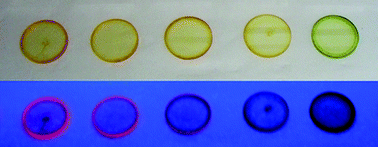In situ identification of a luminescence quencher in an organic light-emitting device
Abstract
We have used in situ

* Corresponding authors
a
Department of Materials Science and Engineering, Cornell University, Ithaca, New York, USA
E-mail:
ggm1@cornell.edu
Fax: +1-607-255-2365
Tel: +1-607-255-1956
b Cavendish Laboratory, University of Cambridge, Madingley Road, Cambridge, UK
c Department of Chemistry and Chemical Biology, Cornell University, Ithaca, New York, USA
We have used in situ

 Please wait while we load your content...
Something went wrong. Try again?
Please wait while we load your content...
Something went wrong. Try again?
J. D. Slinker, J. Kim, S. Flores-Torres, J. H. Delcamp, H. D. Abruña, R. H. Friend and G. G. Malliaras, J. Mater. Chem., 2007, 17, 76 DOI: 10.1039/B613403C
To request permission to reproduce material from this article, please go to the Copyright Clearance Center request page.
If you are an author contributing to an RSC publication, you do not need to request permission provided correct acknowledgement is given.
If you are the author of this article, you do not need to request permission to reproduce figures and diagrams provided correct acknowledgement is given. If you want to reproduce the whole article in a third-party publication (excluding your thesis/dissertation for which permission is not required) please go to the Copyright Clearance Center request page.
Read more about how to correctly acknowledge RSC content.
 Fetching data from CrossRef.
Fetching data from CrossRef.
This may take some time to load.
Loading related content
